
For professionals dedicated to delivering exceptional adventure and recreation experiences, the safety and reliability of your ropes courses are non-negotiable. Navigating the complexities of operational efficiency and visitor engagement requires meticulous attention to detail, and one critical aspect often comes into sharp focus: the annual ropes course inspection. This essential process, mandated by standards like EN 15567, goes beyond simple compliance, offering a robust layer of security and a clear pathway to maintaining the highest operational standards.
The Undeniable Value of Regular Ropes Course Inspections
Engaging an external, competent body to conduct your annual ropes course inspection offers a wealth of advantages that directly impact the safety, legality, and overall quality of your adventure operations. Think of this process as a vital health check for your structures, providing an objective evaluation that internal assessments might overlook.
- Objective Evaluation: External inspectors provide an unbiased perspective, free from internal pressures or preconceived notions about the course’s condition.
- Proactive Hazard Identification: Early detection of potential issues, from worn components to structural weaknesses, significantly reduces the risk of accidents and potential liabilities.
- Compliance Assurance: Adherence to recognized standards like EN 15567 demonstrates a commitment to industry best practices, which is crucial for insurance, legal defense, and building customer trust.
- Access to Specialized Knowledge: Benefit from the broad expertise of seasoned inspectors who are up-to-date with the latest safety regulations and emerging industry concerns.
The EN 15567 Part 1 standard clearly outlines the necessity of these periodic inspections, recommending they occur no less than every 15 months following the initial certification. While not always legally binding, this standard represents the accepted benchmark for safety and is frequently referenced in liability assessments within the adventure and recreation sector.
Decoding the Annual Ropes Course Inspection Process
The annual inspection is a comprehensive undertaking designed to thoroughly evaluate the safety and operational readiness of your ropes course. Typically executed by a team of experienced and qualified inspectors, this process involves a detailed physical examination coupled with a meticulous review of essential documentation.
- Initial Briefing: The inspection typically begins with a consultation to ensure the inspectors fully understand the specifics of your course design, operational procedures, and any particular concerns you might have.
- Thorough On-Site Examination: Inspectors will conduct a hands-on, element-by-element assessment of your ropes course, paying close attention to critical areas such as:
- The integrity and condition of all structural components, including ropes, cables, wood, and metal elements.
- The functionality and safety of ziplines, including speed checks, clearance assessments, landing zone safety, and the effectiveness of emergency braking systems.
- Close scrutiny for any signs of wire breaks in cables, particularly at and around termination points and clamps.
- Assessment of wooden structures for rot, decay, and overall stability, including the condition of supporting trees if applicable.
- Evaluation of wear and tear on critical safety equipment like fall arrest systems and lowering device suspensions.
- Document Verification: Inspectors will also review essential records, including the latest PPE inspection logs, tree inspection reports (if applicable), and documented maintenance protocols to ensure compliance and proper upkeep.
- Immediate Feedback and Consultation: Any defects or areas of concern identified during the inspection are typically discussed on-site, allowing for immediate clarification and preliminary discussions on potential solutions.
- Comprehensive Reporting: Following the physical inspection and document review, you will receive a detailed report categorizing any identified defects as either serious (requiring immediate corrective action) or minor (with a specified timeframe for remediation).
- Rectification Guidance: Often, the inspection team will provide a framework or document for you to record the steps taken to rectify any identified issues, ensuring a clear audit trail of safety improvements.
This rigorous approach ensures that all safety-critical aspects of your ropes course are meticulously evaluated, providing you with a clear and accurate understanding of its current safety status and any necessary remedial actions.
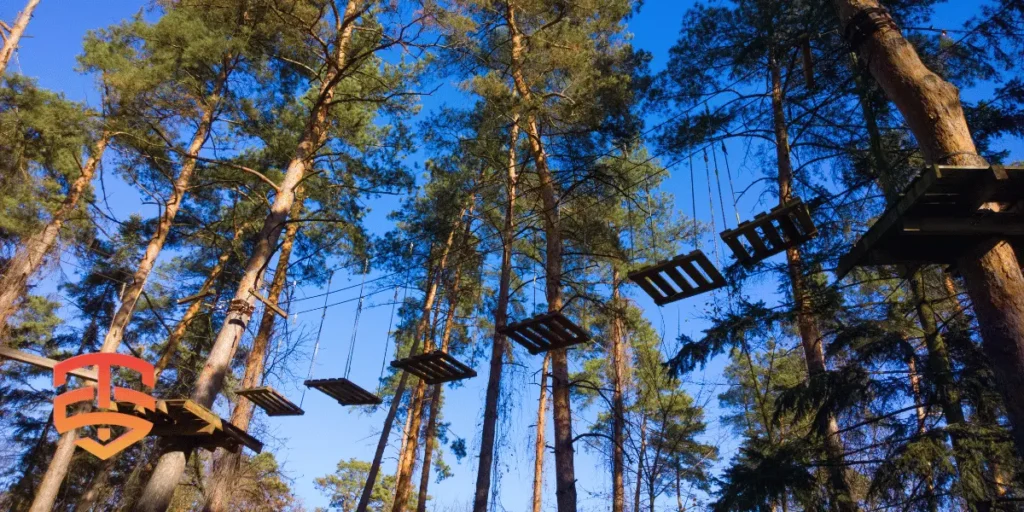
Low Ropes, High Stakes: The Universal Need for Annual Inspection
It’s crucial for operators to understand that the EN 15567 standard does not differentiate between low and high ropes courses when it comes to the necessity of annual inspections. Regardless of the height or perceived risk level, all installations are subject to the same requirements for both initial and ongoing periodic inspections. Neglecting the annual inspection for a low ropes course can carry the same potential safety and legal consequences as overlooking the inspection for a high ropes configuration.
- Consistent Standards: The EN 15567 framework applies uniformly across all types of ropes courses, emphasizing a consistent approach to safety.
- Hidden Risks in Low Elements: Even elements close to the ground can present hazards if not properly maintained and regularly inspected for wear, damage, or incorrect setup.
- Proactive Safety Culture: Embracing regular inspections for all courses fosters a strong safety-first culture within your organization, demonstrating a commitment to participant well-being.
Therefore, it is imperative for professionals managing any type of ropes course to prioritize and schedule these annual evaluations to ensure the continued safety and compliance of their operations.
Selecting the Right Partner for Your Annual Inspection
Choosing a competent and qualified inspection body is paramount to ensuring a thorough, reliable, and ultimately valuable annual inspection. While the profession of ropes course inspector may not be legally regulated in all jurisdictions, it is essential to partner with a provider that possesses the necessary expertise, experience, and recognized credentials. The EN 15567 standard itself recommends engaging an inspection body that adheres to the ISO 17020 standard, which outlines the general requirements for the competence of bodies performing inspection.
- Accreditation and Certifications: Look for inspectors who hold relevant training certifications from reputable industry organizations (such as IAPA or ERCA), demonstrating a commitment to professional development and recognized standards.
- Proven Experience: Inquire about the inspection body’s track record, including the number and types of ropes course inspections they have successfully completed. Experience translates to a deeper understanding of potential issues and effective inspection techniques.
- Independence and Objectivity: Ensure that the inspection body is an independent entity, separate from those involved in the initial construction or ongoing maintenance of your ropes course. This “dual control” principle ensures an unbiased evaluation.
- In-Depth Industry Knowledge: The most effective inspectors possess a comprehensive understanding of ropes course design, construction methodologies, operational best practices, and the evolving landscape of safety standards within the adventure and recreation industry.
- Ongoing Support and Communication: A reputable inspection partner will be readily available to address any questions you may have, provide clarification on findings, and offer guidance on remediation even after the inspection report has been issued.
Partnering with a knowledgeable and experienced inspection team provides invaluable peace of mind, knowing that your ropes course is being evaluated to the highest standards of safety and compliance, ultimately safeguarding your participants and your business.
Get in Touch!
In the dynamic world of adventure and recreation, the annual ropes course inspection stands as a cornerstone of safety and operational excellence. By proactively engaging qualified external experts to conduct these thorough evaluations, professionals can not only ensure compliance with industry standards like EN 15567 but also cultivate a safer environment for participants, mitigate potential risks, and ultimately enhance the long-term success and reputation of their operations. Prioritizing this critical process is an investment in safety, compliance, and the continued growth of your adventure business.
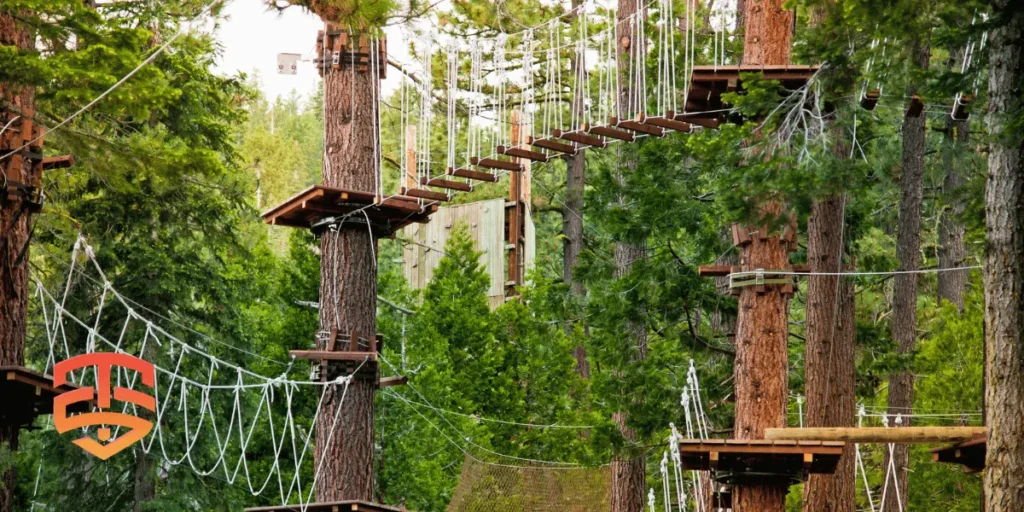
FAQ’s
Why is an annual inspection of my ropes course necessary?
Annual inspections, or periodic inspections as defined by EN 15567, are essential for identifying any wear and tear, potential safety hazards, and ensuring ongoing compliance with established safety standards. This proactive approach helps to prevent accidents, protect your business from potential liability, and maintain the overall operational integrity of your ropes course.
How often do I need to have my ropes course inspected?
According to the EN 15567 standard, a periodic inspection must be conducted at least once every year, with the interval between inspections not exceeding 15 months from the date of the initial inspection or the previous periodic inspection.
What is the difference between an initial inspection and an annual inspection?
The initial inspection is a comprehensive evaluation that takes place before a new ropes course is put into operation for the first time. The annual or periodic inspection is a recurring examination conducted at least once a year to assess the continued safety and condition of an existing ropes course structure and its components.
Who is qualified to perform an annual ropes course inspection?
The EN 15567 standard recommends utilizing an inspection body that meets the requirements outlined in ISO 17020. It is crucial to select inspectors who possess relevant training, certifications from recognized organizations (e.g., IAPA, ERCA), and demonstrable experience in the ropes course industry. Furthermore, the inspection body should be independent of the entities involved in the course’s construction and routine maintenance.
What happens after the annual inspection is completed?
Following the annual inspection, you will receive a detailed report outlining any identified defects or areas of concern. These findings are typically categorized as either serious (requiring immediate attention and corrective action) or minor (with a specified timeframe for remediation). You will also often receive documentation to record the steps taken to rectify these issues. Addressing all identified concerns promptly is vital to ensuring the continued safe operation of your ropes course.
Gearing Up for Success: Expert Insights on the Adventure Business
The adventure business is booming, offering thrilling experiences and fostering a love for the outdoors. But navigating this exciting industry requires knowledge and expertise. To delve deeper and gain valuable insights from seasoned professionals, explore our additional resources below…
- How to startup a Successful Zip Line Business
- Implementing a Safety and Quality Management System
- ROI at Climbing Walls and Family Entertainment Centers
- Using Technology to Make Your Climbing Gym Accessible and Inclusive
- The Secret to Better Resource Management and Customer Satisfaction
- Every modern climbing gym should have these 5 features
- Considerations when designing ropes courses and adventure parks
- Leading the Way in profitable and safe climbing
- Increase Revenue and Customer Satisfaction for Family Entertainment Centers
- Creating Value for Customers by Using an Auto Belay
- Adventure parks’ logistics essential to customer satisfaction, TO, and ROI.
- Drive Revenue and Customer Satisfaction with Auto Belays
- Considering operating and investing in a zipline?
- Competitive Advantage of an Auto Belay
- Why using Auto Belays Boosts your Business
- ROI at Climbing Walls and Family Entertainment Centers
- Everything You Need to Know about Buying Auto Belays
-
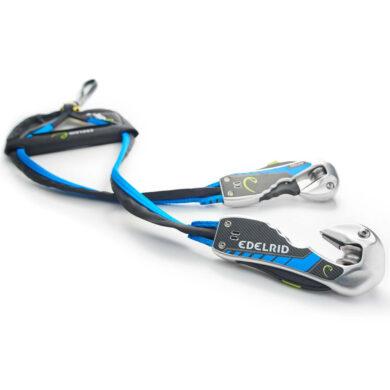 Edelrid Smart Belay X | Magnetic Locking Mechanism€ 544,00 – € 623,00 Ex VAT
Edelrid Smart Belay X | Magnetic Locking Mechanism€ 544,00 – € 623,00 Ex VAT -
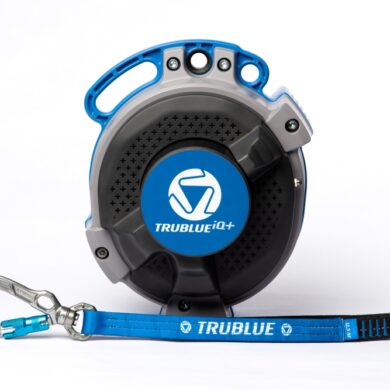 TRUBLUE iQ Auto Belay | 4,5 – 20 meter€ 2.799,00 – € 3.159,00 Ex VAT
TRUBLUE iQ Auto Belay | 4,5 – 20 meter€ 2.799,00 – € 3.159,00 Ex VAT -
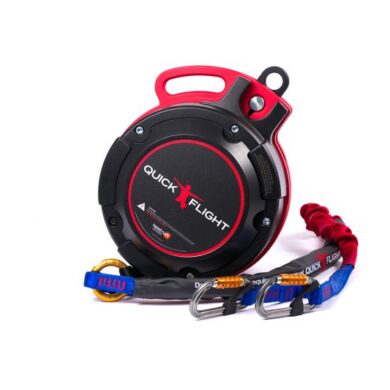 QuickFlight Free Fall Device | 6 – 15,3 meter€ 4.249,00 – € 4.549,00 Ex VAT
QuickFlight Free Fall Device | 6 – 15,3 meter€ 4.249,00 – € 4.549,00 Ex VAT







